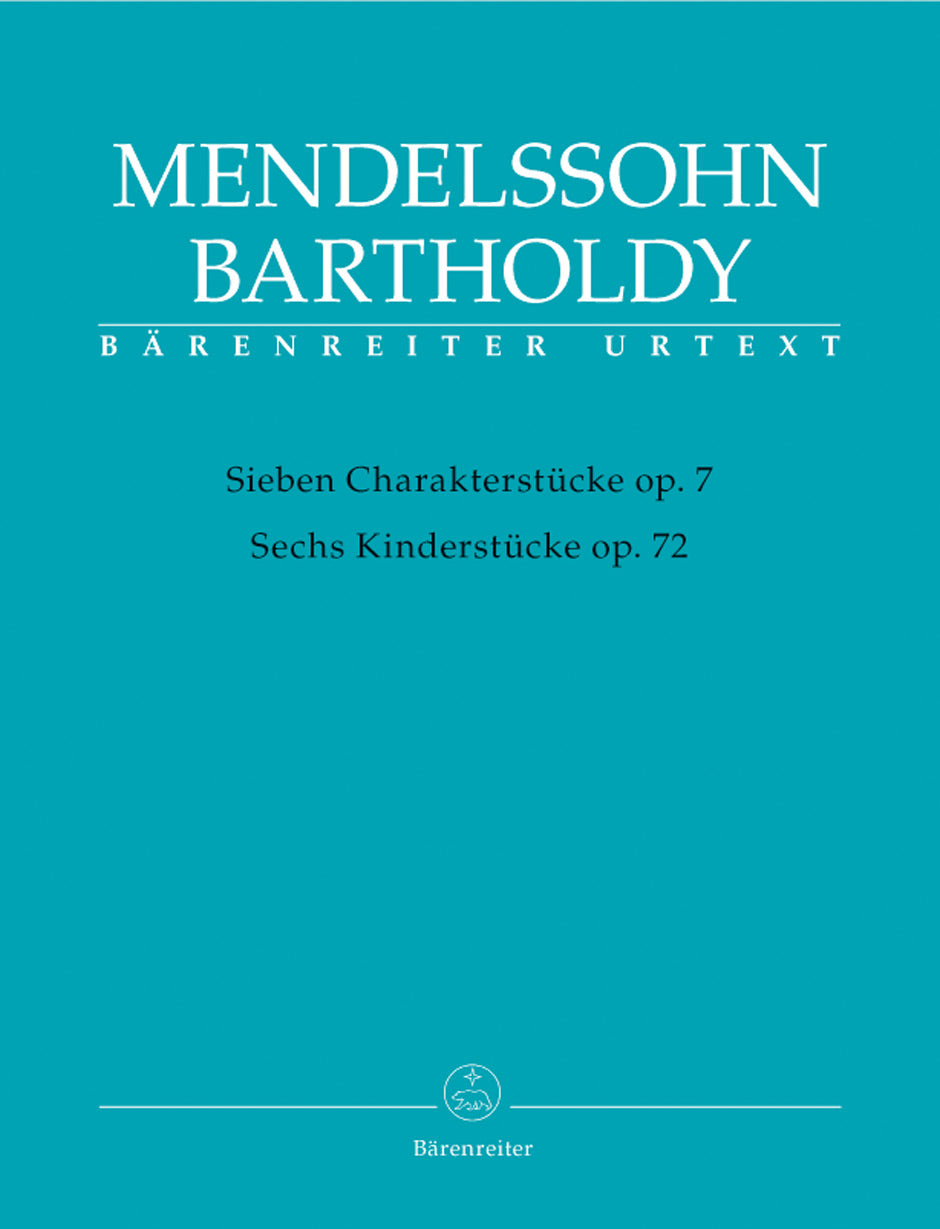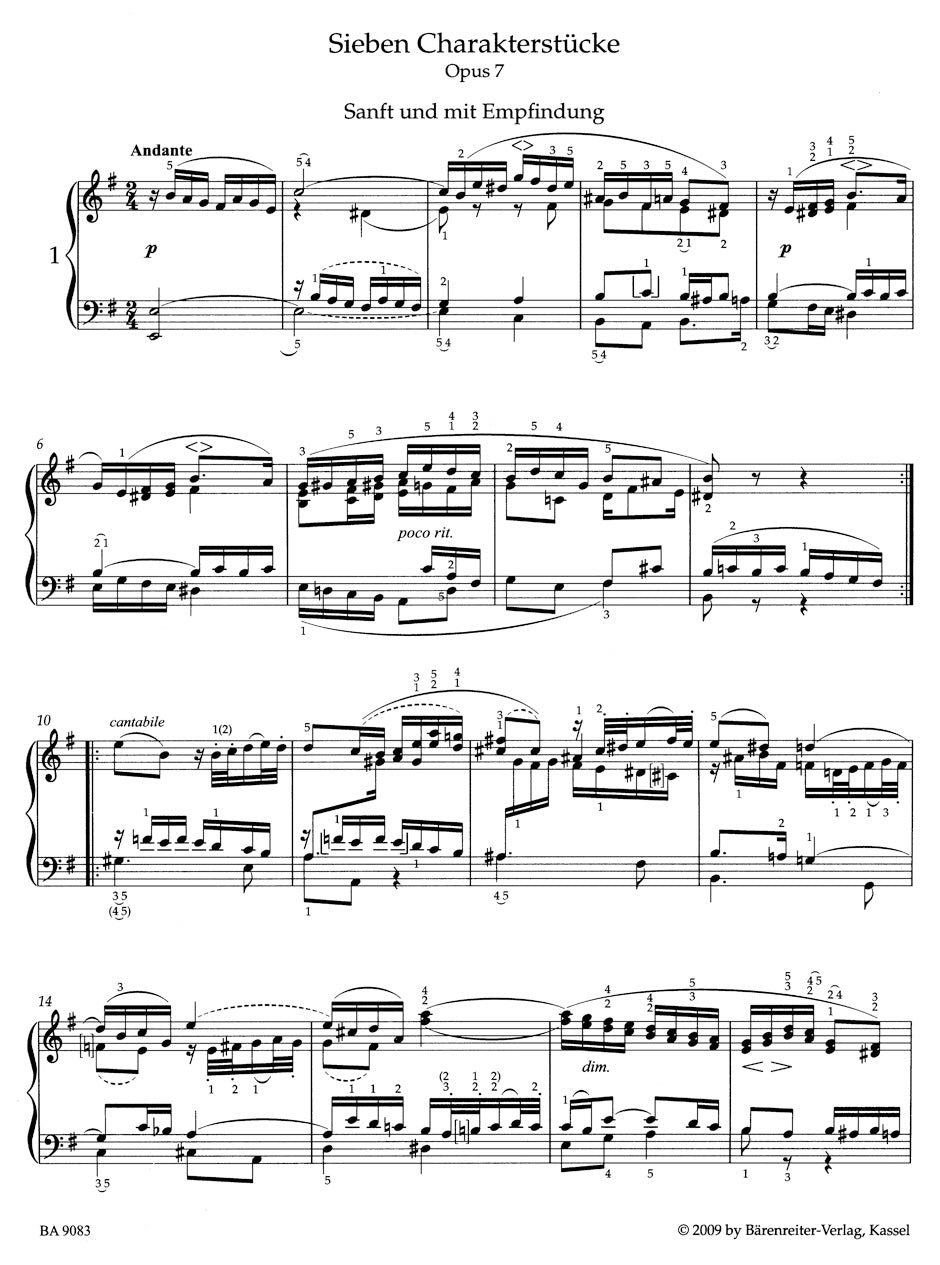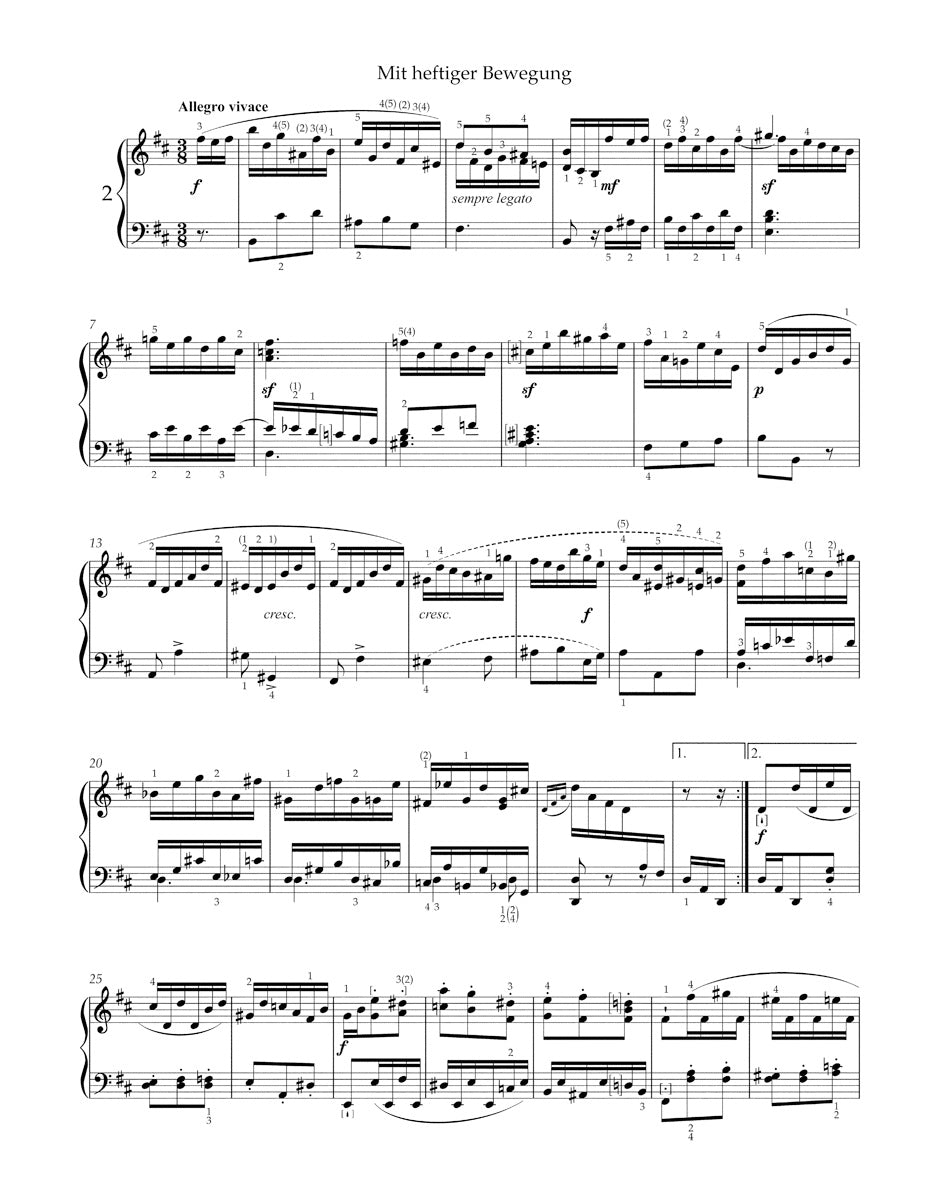Mendelssohn: 7 Characteristic Pieces, Op. 7 and 6 Children's Pieces, Op. 72
In stock and typically ships within 1 business day.
- Composer: Felix Mendelssohn (1809-1847)
- Editor: Holger M. Stüwe
- Instrumentation: Piano
- ISMN:
- Size: 9.6 x 12.2 inches
- Pages: 89
- Urtext / Critical Edition
Description
The Character Pieces, Op. 7 (Charakterstücke) and Children's Pieces, Op. 72 (Kinderstücke) are Mendelssohn's most popular piano albums besides his Lieder ohne Worte and the Variations sérieuses, Op. 54. Robert Schumann described the character pieces as an interesting contribution to the development of the masterful youth.
The compositions mostly dating from 1827, are essentially the result of his lessons with Carl Friedrich Zelter in Berlin. The teacher encouraged his pupil to immerse himself in the strict style of old music, in particular Johann Sebastian Bach, but at the same time, as he himself said, confidently allowed Mendelssohn to dream of dragons and goblins.
In the 19th century, learning the piano was regarded as a highly desirable accomplishment. The demand for piano lessons for children led rapidly to the development of a repertoire suitable for this age-group. Albums for children were particularly popular around the mid-19th century and were popular presents for childrens birthdays, Christmas and other occasions.
The edition contains both piano cycles in the versions published in the first edition, and an extensive appendix also includes variants and early versions which survive in different autograph manuscripts
Works:
- Sanft und mit Empfindung, MWV U 56, Op. 7, No. 1
- Mit heftiger Bewegung, MWV U 44, Op. 7, No. 2
- Kräftig und feurig, MWV U 59, Op. 7, No. 3
- Schnell und beweglich, MWV U 55, Op. 7, No. 4
- Ernst und mit steigender Lebhaftigkeit, MWV U 60, Op. 7, No. 5
- Sehnsüchtig, MWV U 61, Op. 7, No. 6
- Leicht und luftig, MWV U 62, Op. 7, No. 7
- Allegro non troppo in G Major, MWV U 171, Op. 72, No. 1
- Andante sostenuto in E-flat Major, MWV U 170, Op. 72, No. 2
- Allegretto in G Major, MWV U 164, Op. 72, No. 3
- Andante con moto in D Major, MWV U 169, Op. 72, No. 4
- Allegro assai in G Minor, MWV U 166, Op. 72, No. 5
- Vivace in F Major, MWV U 168, Op. 72, No. 6
Publishers use a lot of words to describe what they sell, and we know it can be confusing. We've tried to be as clear as possible to make sure you get exactly what you are looking for. Below are descriptions of the terms that we use to describe the various formats that music often comes in.
Choral Score
A score for vocalists that only contains the vocal lines. The instrumental parts are not there for reference. Generally, cheaper than a vocal score and requires multiple copies for purchase.
Facsimile
Reproductions of the original hand-written scores from the composer.
Full Score
For ensemble music, this indicates that the edition contains all parts on a single system (there are not separate parts for each player). In larger ensembles, this is for the conductor.
Hardcover
Hardbound. Generally either linen-covered or half-leather.
Orchestral Parts
Similar to a wind set, this is a collection of parts. In the case of strings, the numbers listed are the number of copies included, though generally these are available individually (often with minimum quantities required).
Paperback
When publishers offer multiple bindings (e.g. hardcover) or study scores, this is the "standard" version. If you're planning to play the music, this is probably what you want.
Performance / Playing Score
A score of the music containing all parts on one system, intended for players to share. There are not separate parts for each player.
Set of Parts
For ensemble music, this indicates that there are separate individual parts for each player.
Solo Part with Piano Reduction
For solo pieces with orchestra, this is a version that contains a piano reduction of the orchestra parts. For piano pieces, two copies are typically needed for performance.
Study Score
A small (think choral size) copy of the complete score meant for studying, and not playing. They make great add-ons when learning concertos and small chamber works.
Vocal Score
A score prepared for vocalists that includes the piano/organ part or a reduction of the instrumental parts.
Wind Set
For orchestral music, this is a collection of wind and percussion parts. The specific quantities of each instrument are notated.
With Audio
In addition to the printed music, the edition contains recordings of the pieces. This may be an included CD, or access to files on the internet.
With / Without Fingering (Markings)
Some publishers prepare two copies - a pure Urtext edition that includes no fingering (or bowing) suggestions and a lightly edited version that includes a minimal number of editorial markings.





